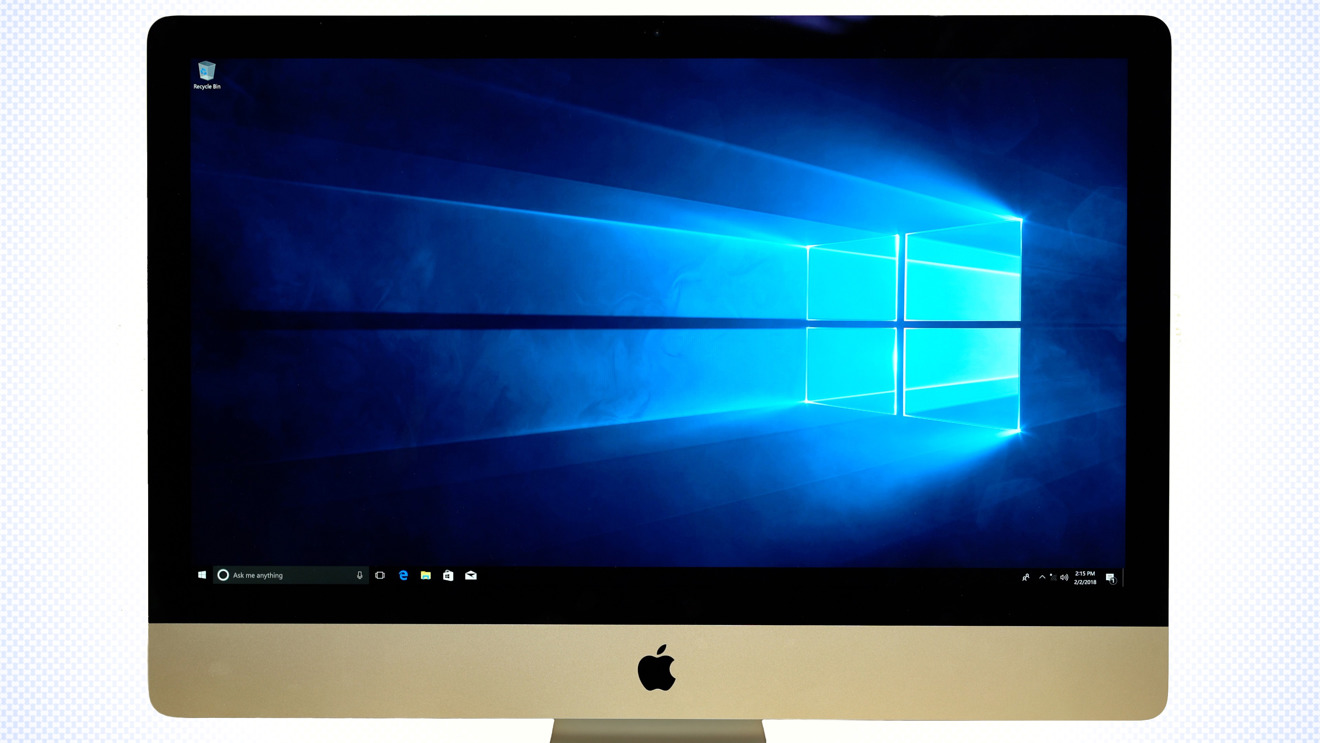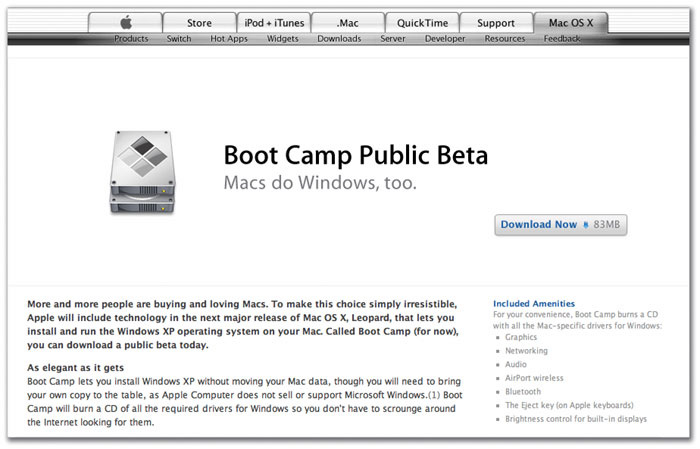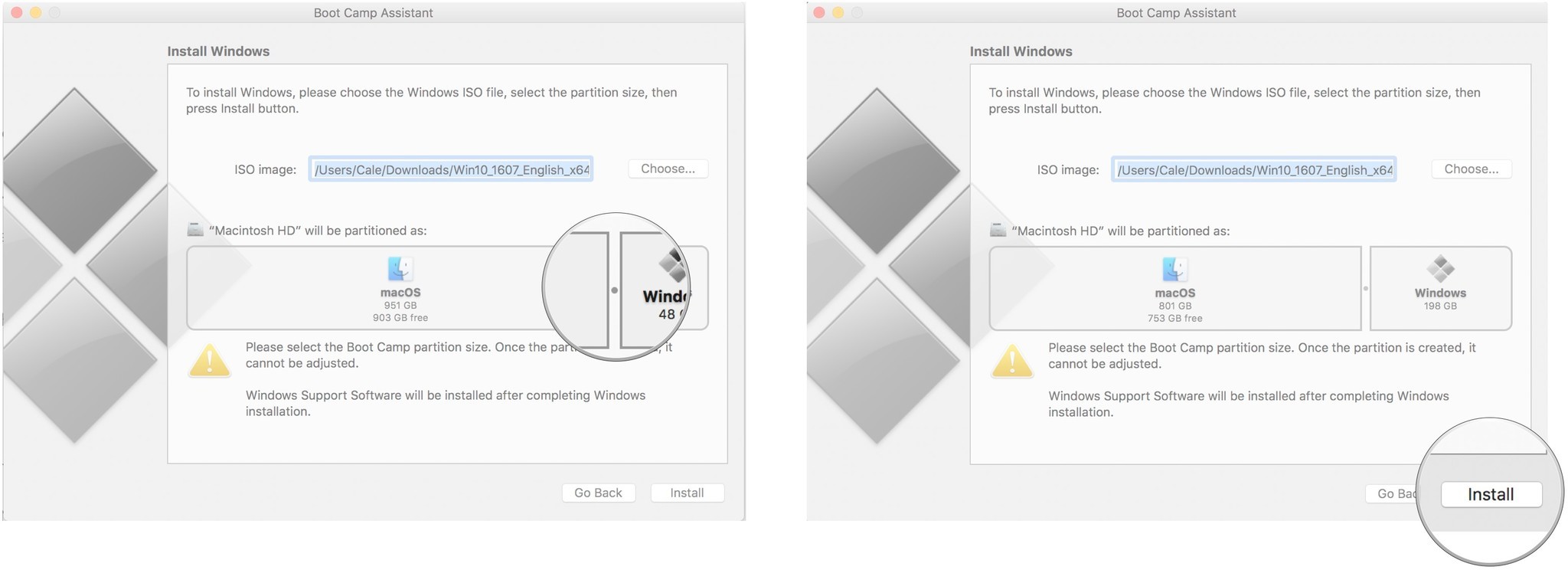

- #Mac bootcamp load mac os how to
- #Mac bootcamp load mac os windows 10
- #Mac bootcamp load mac os download
- #Mac bootcamp load mac os windows
You hosed your GUID partition table by manipulating it from inside Windows 10. But deleting it isn't the real reason why you can't boot. The small partition you've deleted is your on-board Recovery HD. Output of `diskutil cs list -bash-3.2# diskutil cs listĬoreStorage logical volume groups (1 found)

I am grateful for any suggestions out of this misery. The Recovery Mode even gives me the option to boot into my Mac partition, but doing so results in a black screen. Here is the outcome:īesides, the Macintosh HD partition is also shown in Disk Utility: I booted into Recovery Mode using cmd + r and ran diskutil list. Now my question is: How can I recreate the deleted partition in order to be able to reboot into OS X? Now I am only able to boot into Windows 10. Instead of ignoring it, I deleted and recreated the bootcamp partition from Windows Setup. Once Bootcamp created the BOOTCAMP partition and restarted the system, I noticed that there was an additional small-sized partition created (~600 MB) just before the BOOTCAMP partition. Turns out the issue occurs because of a mistake I made during the Windows installation. Now I am neither able to boot into OSX, nor is its partition shown anywhere.
#Mac bootcamp load mac os windows 10
If you booted from a USB disk, click “Continue” to advance to the installer.I just installed Windows 10 successfully via BootCamp. If you booted from a functioning recovery partition, click the “Reinstall macOS” button. With your information wipe complete, you are now ready to reinstall macOS. If you choose three or five passes, you might want to leave this running overnight. If you opted to wipe your drive securely, this might take a while-30 minutes to an hour is not unreasonable for one pass. Just give your drive a name (I recommend “Macintosh HD”, just for consistency’s sake), then click “Erase” to start the overwriting process. You only need to write over a drive once to securely wipe it, but if you’re paranoid you can also wipe it three or five times.Ĭlick “OK” once you’ve decided, but remember: if your Mac has a solid state drive, you do not need to use these options. Now move the dial up, to randomly write data over your entire drive. You still need to wipe the drive, however, or your files will remain in place, so skip to the end of this step to do so.) (If your Mac has a solid state drive, you can skip this part: your SSD will already securely erase files thanks to TRIM. If you’re wiping a mechanical drive, click “Security Options” in the window that pops up. Click your primary drive, then click “Erase” If not you can find Disk Utility in the menu bar: click Utilities then Disk Utility. To get started, click the Disk Utility option.ĭepending on how you started Recovery Mode, you may be presented with the option to start Disk Utility right away, as seen above.

#Mac bootcamp load mac os how to
We’ve shown you how to securely wipe a hard drive with your Mac, and doing so in Recovery Mode isn’t really different from doing so within macOS. If you want a truly clean installation, however, you need to first wipe your hard drive. We recommend backing up files before you do this, just in case, but otherwise you’re ready for step three. Your user accounts and files will stay exactly where they are-only your operating system will be overwritten. If you want to re-install your operating system, but leave your files in place, you can skip this step.

RELATED: 8 Mac System Features You Can Access in Recovery Mode Step Two: Securely Wipe Your Hard Drive (Optional) Once you’ve managed to open up the Recovery Mode in some fashion, we can move on to wiping your drive securely.
#Mac bootcamp load mac os download
You can access recovery without a partition using Network Recovery: hold Command+Shift+R while turning on your Mac and it will download the Recovery features for you. Failing that, you can create a bootable USB installer for macOS Sierra, and boot from that by holding “Option” while turning on your Mac. If neither of these options work, don’t panic! You’ve got a couple of options yet.


 0 kommentar(er)
0 kommentar(er)
